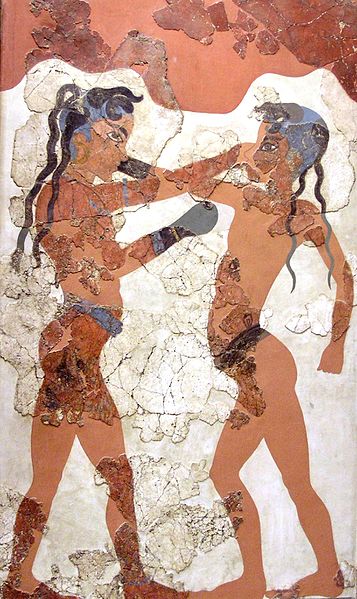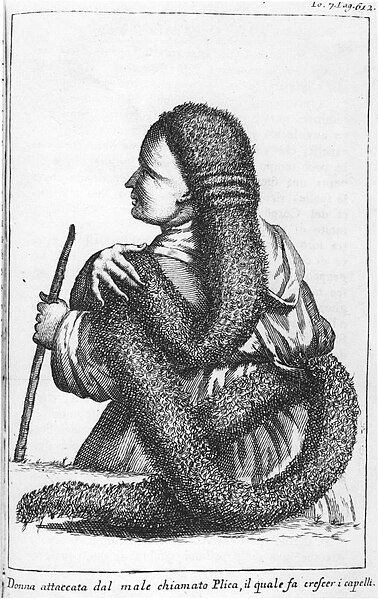Dreadlocks, also known as dreads or locs, are a hairstyle made of rope-like strands of hair. This is done by not combing the hair and allowing the hair to mat naturally or by twisting it manually. Over time the hair will form tight braids or ringlets.
Dreadlocks have a rope-like quality when braided in boxes on one's head.
Young boxers with long dreadlocks depicted on a fresco from Akrotiri (modern Santorini, Greece) 1600–1500 BCE.
It is thought the ancient Greek Kouros statues wore dreadlocks. However, historians and archeologists who specialize in ancient Greek hairstyles suggest they were not dreadlocks but braids. For example, academics at Reed College explained that they were braids of thick, dense hair braided together "divided into uniform globules." "During the archaic period (i.e., up to about 500 BC) the male youth or kouros (Greek) wore his hair long to the shoulders or even longer finely braided—an extremely artificial time-consuming style of the privileged nobles."
Polish plait, 1734–1766
Rastafari, sometimes called Rastafarianism, is an Abrahamic religion that developed in Jamaica during the 1930s. It is classified as both a new religious movement and a social movement by scholars of religion. There is no central authority in control of the movement and much diversity exists among practitioners, who are known as Rastafari, Rastafarians, or Rastas.
Two Rastafari street vendors in Zeerust, South Africa; they are wearing and selling items that display their commitment to the religion
The Liberty Bell Temple in Los Angeles
Haile Selassie, the Emperor of Ethiopia between 1930 and 1974. He is of central importance to Rastas, many of whom regard him as the Second Coming of Jesus and thus God incarnate in human form.
A Rasta in Barbados, wearing a rastacap decorated in the Rastafari colours: green, gold, red and black








